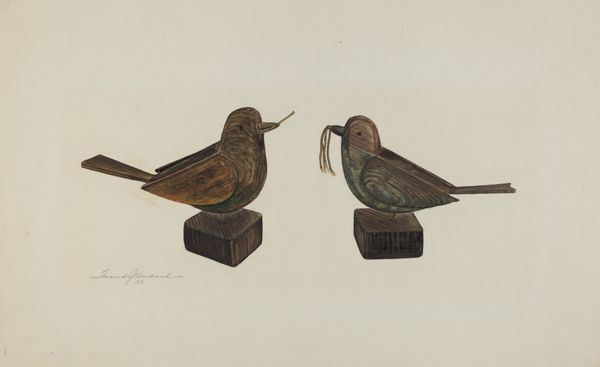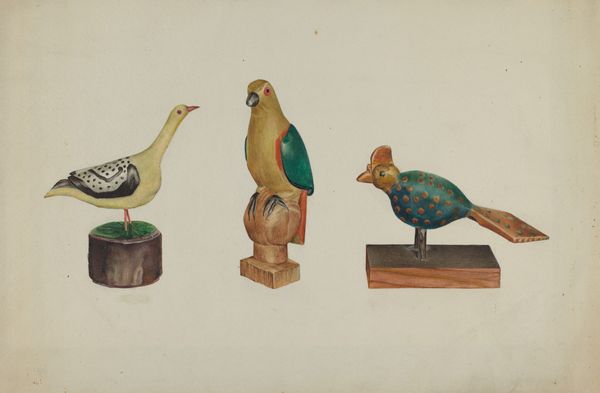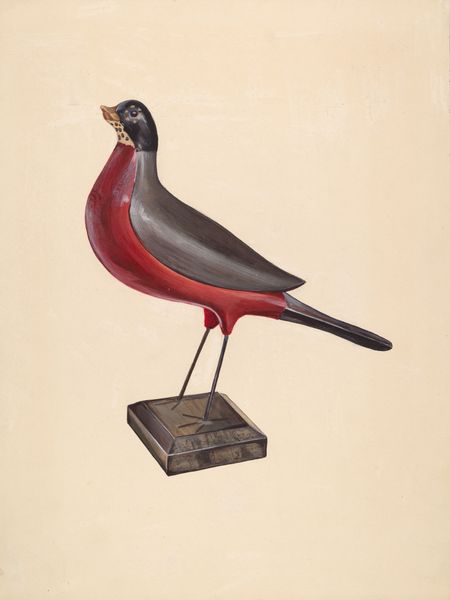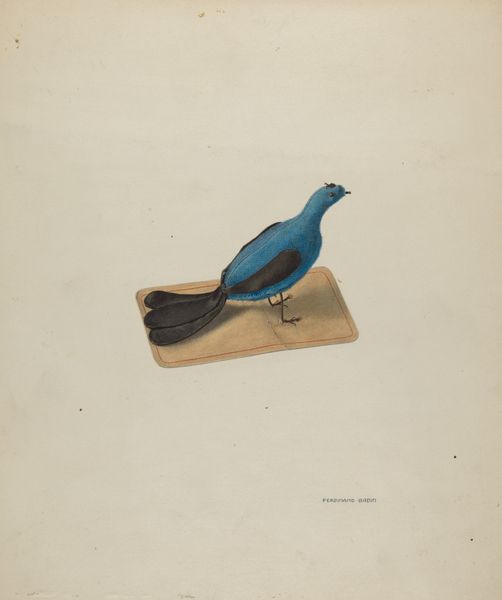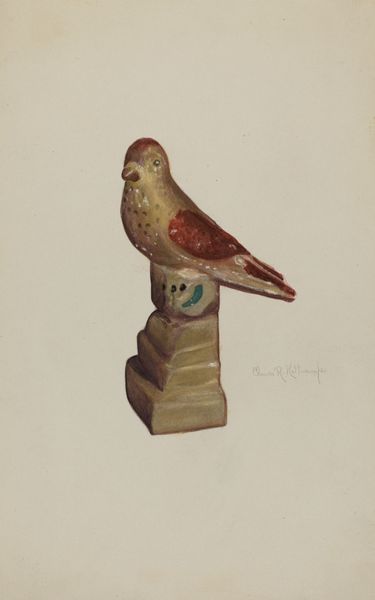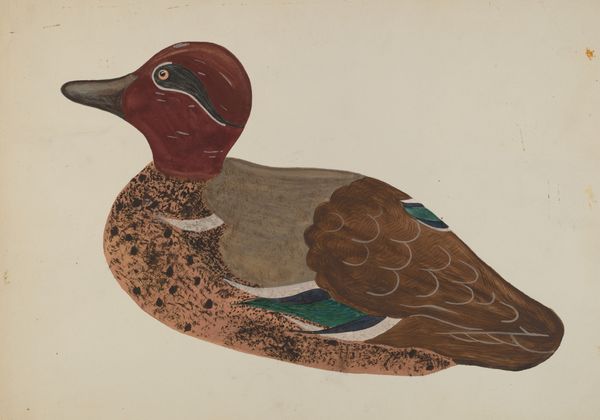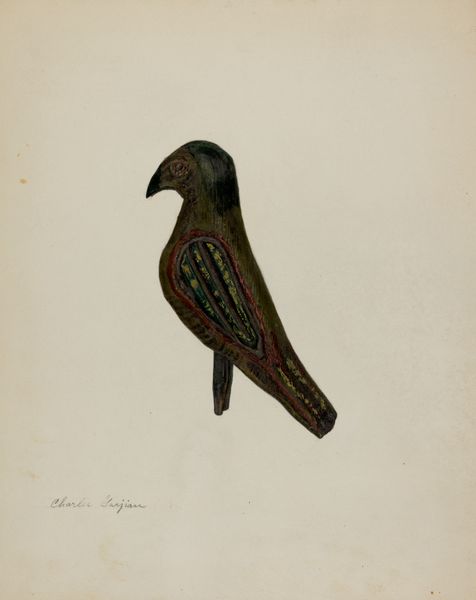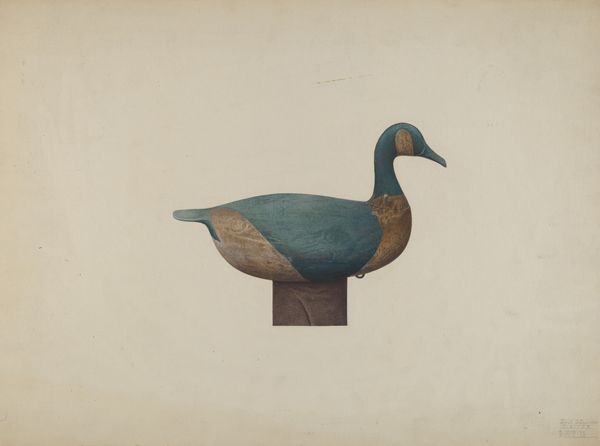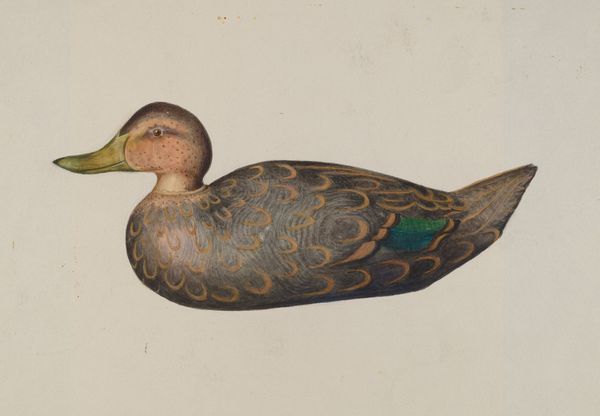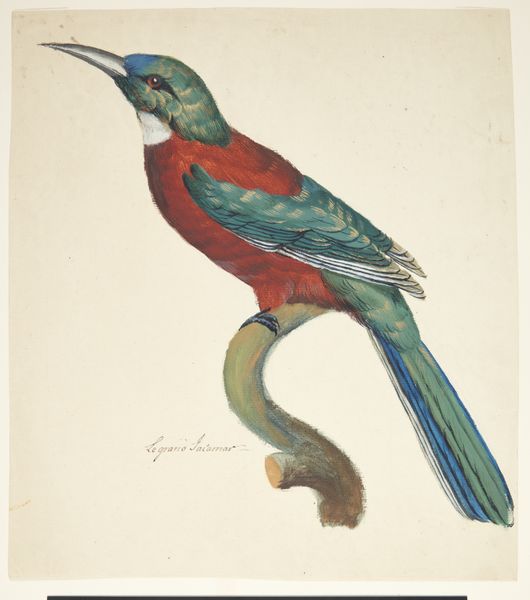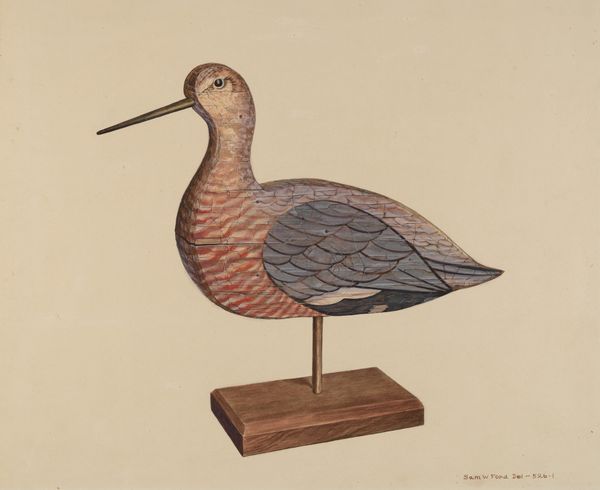
drawing, watercolor
#
drawing
#
watercolor
#
folk-art
#
watercolour illustration
#
watercolor
Dimensions: overall: 23.2 x 30.1 cm (9 1/8 x 11 7/8 in.) Original IAD Object: 3 5/8" high
Copyright: National Gallery of Art: CC0 1.0
Curator: Let's turn our attention to "Pa. German Toy Birds," a watercolor and ink drawing executed around 1939. My first thought is of muted joy, a gentle quaintness radiating from these symmetrical forms. Editor: They strike me as melancholy, actually. Those perched birds, so formally arranged. They are static in the face of global conflict brewing just as this artwork was conceived. Toys existing amidst anxiety. Curator: But consider the careful delineation, the artist's focus on precise shapes and lines, from the beaks to the wooden stands. The color palette, too—earthy reds and muted greens—creates a cohesive visual experience, divorced from temporal unease. It exists, as a construction, perfectly in and of itself. Editor: I agree about the visual strength. However, to ignore the societal conditions under which Arsen Maralian made this piece is to neuter its meaning. Think of the Great Depression ending, of cultural preservation amid modernization and increasing immigration in America. Who were these toys for? Whose heritage is on display? Curator: Precisely. These forms, in their elegant symmetry, transcend immediate socio-political context. Maralian has skillfully balanced warm and cool tones; note the interplay of light and shadow to model the three-dimensionality. Semiotically, we find a balanced representation. Editor: The “Pennsylvania German” aesthetic was romanticized, in many cases erasing the complexities of that specific cultural group during this period. It becomes about representation – the creation of ‘Germanness’ within American parameters and, simultaneously, what that may mean for minority assimilation and white patriarchal legacies of craft production and childhood consumerism. Curator: But we shouldn’t reduce it merely to a political tool. Doesn't the simplicity appeal, speaking to the purity of artistic creation independent of social strife? The essence of the avian form captured with striking clarity! Editor: Maybe purity is a construct itself when so explicitly presenting an interpretation of "folk-art" birds amidst cultural shifts. Instead, consider what it suggests about the marketing and branding of “heritage” during moments of socio-economic and global unrest. It’s not about the beauty of form for its own sake – but about power. Curator: I see your point about representation and power. Perhaps both perspectives highlight a certain truth about this unassuming watercolour. Editor: Yes, ultimately this work encapsulates a sense of beauty but simultaneously, through this very depiction, invites reflection on the intersection between personal experiences, public expectations, and the complex politics of belonging.
Comments
No comments
Be the first to comment and join the conversation on the ultimate creative platform.
